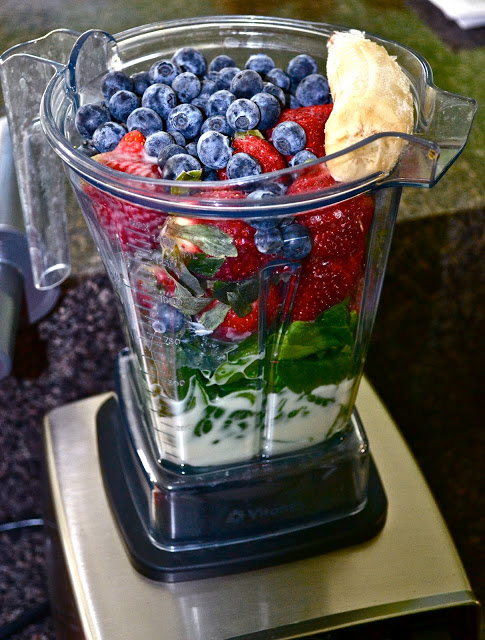Fibre Fail
Fibre is as close to the magic pill of weight loss as you're going to get. It's what fills you up to prevent hunger so you end up eating less later on in the day. Fruits do offer fibre but only if you pick the right ones. Bananas are one of the most common smoothie ingredients, but half of one only offers 1.4 grams of fibre. Aim to include at least 10 grams in your smoothie by adding fibe-rich foods such as berries, kale (it has twice as much as spinach), avocado, kiwi, pear, beans, flax meal, chia seeds, and certain plant-based protein powders.Protein Problems
You've not only added spinach to your smoothie, but you threw in some kale as well. Your body will appreciate the nutrients and fibre found in these greens, but they don't offer a lot of the protein needed to sustain your energy to prevent unnecessary snacking on high-calorie pick-me-ups. Aim to include at least 10 grams of protein by throwing in some milk or soy milk (avoid almond milk as one cup only offers one gram), Greek yoghurt over regular, cottage cheese, protein powder, soft tofu, beans, nuts, or nut butter. If you need some ideas, check out these five high-protein smoothies.Too Much of a Good Thing
Sipping on a cold, creamy smoothie made solely from a variety of fruits is much healthier than downing a doughnut, but even though fruits offer fibreand nutrients, they aren't void of calories. Filling your blender with five different fruits could mean 500 or more calories. Since fruits are full of natural sugars, your body will metabolise them quickly, and hunger pangs will kick in within an hour. Avoid this issue by pairing your fruit with a protein source such as milk, soy milk, yoghurt, protein powder, soft tofu, beans, nuts, or nut butter.A Little For Your Sweet Tooth
One tablespoon of honey or maple syrup will tack on over 60 extra calories, which is unnecessary if you're using naturally sweet fruit in your smoothie. But added sweeteners can also be in the form of flavoured yoghurt, fruit juice, sweetened milks, and canned fruits in syrup. Be mindful of the extra sweetness you're adding, and experiment with using plain yoghurt and unsweetened soy or almond milk instead — your taste buds will soon prefer the subtly sweet.But They're Healthy . . .
Unfortunately, just because a food is nutritious doesn't mean it's low in calories. Certain foods such as avocados, dates, nuts, nut butters, whole milk yogurt, sweetened milks, fresh-pressed juices, oats, and even fruits like apples, pears, mangoes, cherries, and bananas can tack on a hundred calories each. Don't shy away from these good-for-you ingredients — just use small amounts.Piling It Up
That blender or NutriBullet container is pretty large, so it's easy to fill it to the brim with every healthy ingredient you can think of, and before you know it, you've created the tastiest 600-calorie smoothie ever. Measuring out ingredients (instead of eyeballing) is essential if you want to keep the calories down. Copy these smoothie recipes that are under 300 calories, especially if you're pairing yours with something else like a slice of toast or muffin.Sippable Snack
Protein and carbs are essential after a workout, but a snack is just that, a snack; it's not a minimeal. Smoothies tend to be around 300 calories or more, and since snacks should be around 150 calories, that puts you way over the calorie line. To avoid sipping down hundreds of excess calories, a simple snacking solution is to cut your favourite smoothie recipe in half.Source
http://www.popsugar.com.au/fitness/How-Smoothies-Can-Cause-Weight-Gain-34557956#opening-slide




No comments:
Post a Comment